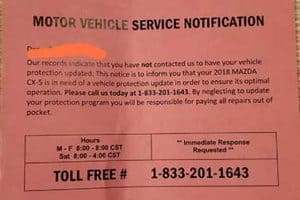Mark Saylor was a former California Highway Patrol officer who tragically lost his life in a car crash in 2009. Saylor was driving a Lexus sedan with his wife, daughter, and brother-in-law when the car suddenly accelerated out of control and crashed.
The accident gained national attention and led to a massive recall of Toyota vehicles due to a defect that caused unintended acceleration.
Saylor was a 19-year veteran of the CHP and was highly respected by his colleagues. He had received numerous commendations during his career, including a Medal of Valor for rescuing a family from a burning car.
After retiring from the CHP, Saylor worked as a regional manager for the California Office of Emergency Services.
The accident that claimed Saylor’s life occurred on August 28, 2009, in Santee, California. The car he was driving accelerated uncontrollably and reached speeds of up to 120 mph before crashing into another vehicle and bursting into flames.
Saylor, his wife, daughter, and brother-in-law were all killed in the accident. The cause of the acceleration was later determined to be a faulty floor mat that had become lodged in the accelerator pedal.
The incident led to a recall of millions of Toyota vehicles and sparked a national conversation about the safety of cars and the responsibility of car manufacturers.
Early Life and Career

According to NBC San Diego, Mark Saylor was a highly respected California Highway Patrol Officer who gained notoriety after his tragic death in a car crash in 2009. Unfortunately, information about his early life and career is scarce.
However, according to available sources, Mark Saylor was born in 1964 and grew up in Southern California. He had a passion for serving his community and decided to pursue a career in law enforcement.
Saylor joined the California Highway Patrol in 1990 and quickly rose through the ranks, earning a reputation as a dedicated and hardworking officer. He was known for his commitment to public safety and his willingness to go above and beyond the call of duty.
During his 19 years with the CHP, Saylor received numerous commendations for his outstanding service and was widely respected by his colleagues and the community he served.
Tragically, Mark Saylor’s promising career was cut short on August 28, 2009, when he and his family were killed in a horrific car crash. The accident occurred when the accelerator on their Lexus ES 350 became stuck, causing the car to accelerate uncontrollably.
Despite Saylor’s efforts to stop the car, it crashed into a ravine and burst into flames, killing all four occupants. The crash received widespread media attention and sparked a wave of recalls and investigations into the safety of Toyota vehicles.
The Tragic Incident
On August 28, 2009, Mark Saylor, a California Highway Patrol officer, was driving a Lexus ES350 with his wife Cleofe Lastrella Saylor, their daughter Mahala, and Cleofe’s brother Chris Lastrella.
They were on their way to a soccer game when the car suddenly accelerated out of control and crashed into a Ford Explorer before careening off the freeway, through a fence, and into a riverbed where it burst into flames.
The 911 Call
During the incident, a 911 call was made from the car by a passenger, who reported that the accelerator was stuck and that they were unable to stop the car. The call ended abruptly as the car crashed.
Witness Accounts
Witnesses reported seeing the car driving erratically and at high speeds before the crash. Some witnesses reported seeing the car’s brake lights flashing as it sped past them, while others reported seeing the car’s floor mats bunched up behind the accelerator pedal.
After the crash, an investigation revealed that the accelerator pedal had become trapped by a misplaced floor mat, causing the car to accelerate uncontrollably.
The incident sparked a massive recall of millions of Toyota vehicles worldwide and led to a $1.2 billion settlement between Toyota and the US government.
The Saylor family’s tragic deaths were a sobering reminder of the importance of vehicle safety and the need for manufacturers to take responsibility for the quality and safety of their products.
Investigations and Findings

Role of Floor Mats
Following the fatal accident involving CHP Officer Mark Saylor and his family, an investigation was conducted to determine the cause of the accident.
According to a report by NBC 7 San Diego, investigators found that the accelerator of the Lexus vehicle the Saylors were driving had become stuck, leading to unintended acceleration.
Witnesses reported seeing the vehicle weaving in and out of traffic before it crashed into an embankment and burst into flames.
The investigation revealed that the floor mat in the driver’s side of the vehicle was not the original mat that came with the car. Instead, it was a mat from a different vehicle model that was not designed to fit the Lexus.
The mat was found to be too long and too thick, causing it to interfere with the accelerator pedal and preventing it from returning to its normal position.
The National Highway Traffic Safety Administration (NHTSA) launched an investigation into the matter and found that the floor mat was indeed the cause of the accident.
As a result, Toyota issued a recall of millions of vehicles to replace the floor mats and modify the accelerator pedals to prevent pedal entrapment.
Software Issues
In addition to the floor mat issue, there were also concerns about the software used in the electronic throttle control system of the affected vehicles.
According to a report by Wikipedia, engineer Colin O’Flynn was able to induce unintended acceleration in a similar Toyota vehicle using electromagnetic fault injection (EMFI) on a test bench. He used an ECU and components from a wrecked 2005 Toyota Corolla.
This raised concerns about the safety of the electronic throttle control system and whether it was vulnerable to bad software or electronics. However, investigations by the NHTSA and Toyota found no evidence of a safety defect in the electronic throttle control system.
Despite this, Toyota agreed to pay a $1.2 billion settlement to the Justice Department in 2014 to resolve a criminal investigation into its handling of unintended acceleration issues.
The settlement included an admission by Toyota that it misled consumers about the safety of its vehicles and failed to disclose information about the defects to regulators and the public.
Toyota’s Response
Toyota, the manufacturer of the Lexus ES350 sedan that Mark Saylor was driving during the fatal accident, faced significant backlash following the incident. In response, Toyota issued a series of recalls for various models due to concerns of unintended acceleration.
The recalls affected millions of vehicles worldwide and cost Toyota billions of dollars in fines and settlements. In 2014, Toyota agreed to pay a $1.2 billion settlement to the U.S. government for misleading the public about the safety of its vehicles.
In addition to the civil penalties, Toyota also faced a criminal investigation by the U.S. Department of Justice. In 2014, Toyota reached a $1.2 billion settlement with the DOJ, which included an admission of wrongdoing.
Toyota’s response to the Saylor incident was heavily scrutinized, with many accusing the company of failing to take responsibility for the safety of its vehicles.
However, Toyota has since implemented numerous safety measures and has made significant changes to its internal processes to ensure the safety of its customers.
Despite the negative publicity and financial losses, Toyota has remained a leading manufacturer in the automotive industry. The company has continued to innovate and produce high-quality vehicles while prioritizing safety and customer satisfaction.
Aftermath and Impact

Impact on Auto Industry
The tragic death of Mark Saylor and his family in a Lexus ES 350 in 2009 had a significant impact on the auto industry.
The accident was caused by a sudden unintended acceleration (SUA) issue in the car, which led to a recall of millions of Toyota and Lexus vehicles. The incident also raised concerns about the safety of electronic throttle control systems and the need for better safety regulations.
The recall cost Toyota billions of dollars in fines, settlements, and lost sales. The company faced numerous lawsuits, including a $1.2 billion settlement with the US government in 2014. The incident also damaged Toyota’s reputation for quality and safety, which took years to recover.
Legal Proceedings
The legal proceedings related to the accident were complex and protracted. The family of Mark Saylor filed a wrongful death lawsuit against Toyota, alleging that the company was aware of the SUA issue and failed to take appropriate action. The case was settled out of court for an undisclosed amount.
The US Department of Justice also launched an investigation into Toyota’s handling of the recall and issued a $1.2 billion fine for obstructing the investigation. The investigation revealed that Toyota had known about the SUA issue for years but failed to disclose it to regulators and the public.
Bob Baker, the dealership that leased the car to Saylor, was also sued for negligence and settled out of court for an undisclosed amount.
The California Highway Patrol officer who was driving the car at the time of the accident, along with his family members, was posthumously awarded the California Medal of Valor for their bravery in trying to prevent the accident.
The impact of the accident on the local community of El Cajon and San Diego County was profound. The accident occurred on a busy highway, and the resulting fireball was witnessed by many people.
The incident also raised awareness about the dangers of cruise control and the importance of driver education and training.
The incident had a ripple effect that extended beyond the US. Toyota’s reputation for quality and safety was damaged worldwide, and the company faced similar lawsuits and investigations in Japan and other countries.
The incident also led to calls for better safety regulations and increased transparency in the auto industry.
In Closing
Mark Saylor’s tragic death in the 2009 Toyota sudden acceleration accident was a wake-up call for the automotive industry.
The accident led to the recall of millions of Toyota vehicles worldwide and a $1.2 billion settlement with the U.S. government. Saylor’s legacy lives on as a reminder of the importance of safety and accountability in the automotive industry.
In closing, Mark Saylor’s life and death serve as a reminder of the importance of safety, accountability, and ethical business practices.





![Toyota Long Life Coolant and Super Long Life Coolant [Review] toyota long life coolant](https://roadsumo.com/wp-content/uploads/2021/07/toyota-long-life-coolant-150x150.jpg)



